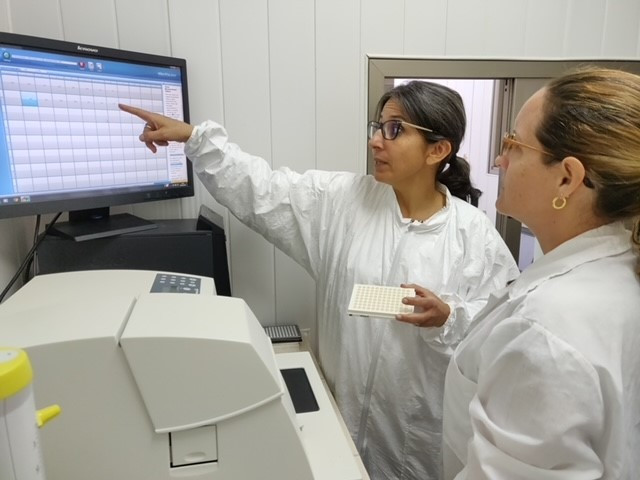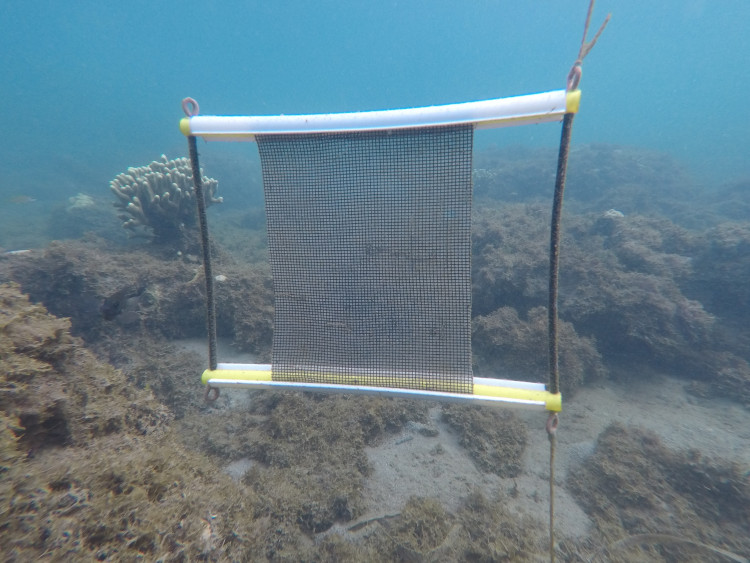
CEAC researchers look for toxins using the receptor binding assay. (Photo: Cienfuegos Center for Environmental Studies)
To address the ciguatoxin problem, the IAEA has been building capacity for ciguatera monitoring through nuclear and isotopic techniques that can quickly identify biotoxins in seafood and accurately identify outbreaks compared to other methods. The IAEA’s Marine Environment Laboratories help ensure that innovative detection methods can be adopted by the countries most affected by ciguatera.
For instance, the IAEA has arranged training in Cuba on a new approach to use a ‘receptor binding assay’ (RBA) to detect ciguatoxins even in samples containing multiple toxin variants. This equips local scientists with the tools to identify fish at high-risk from ciguatoxin contamination and make informed decisions about seafood safety.
The RBA technology is of particular importance, as it is now used as a recognized regulatory method to certify the safety of seafood, such as shellfish imported to the European Union for consumption.
The transfer of this RBA technology to Caribbean nations has empowered local scientists to monitor marine toxins more effectively. The early detection of harmful algal blooms that produce ciguatoxins has helped Caribbean nations to implement early warning systems for seafood safety. The IAEA has organized international workshops to train scientists from small island developing states in the latest techniques to detect marine toxins and foster global collaboration and knowledge exchange so that even nations with limited resources can better protect their citizens and maintain safe, sustainable fisheries.
The scientific data collected assists member countries in detecting and characterizing biotoxins, which enhances preparedness and response to relevant public health emergencies.
“With the right tools, ciguatera blooms and ciguatoxin outbreaks can be effectively mitigated,” said Alejandro Garcia Moya, Director of the Environmental Studies Centre of Cienfuegos (CEAC). “The IAEA workshops to transfer knowledge on marine toxin monitoring and management techniques are a key aspect in capacity building and strengthening in small islands developing states and consequently have a direct impact on the management of harmful algal blooms and their effects on our marine environments and the people relying on them.”
“The IAEA has been collaborating with CEAC to enhance ciguatera monitoring in the region using nuclear and isotopic techniques,” said Florence Descroix-Comanducci, Director of the IAEA’s Marine Environment Laboratories. “Our expertise in nuclear science and technology and collaborations with scientific partners are a testament to what collaborative science can achieve.”








